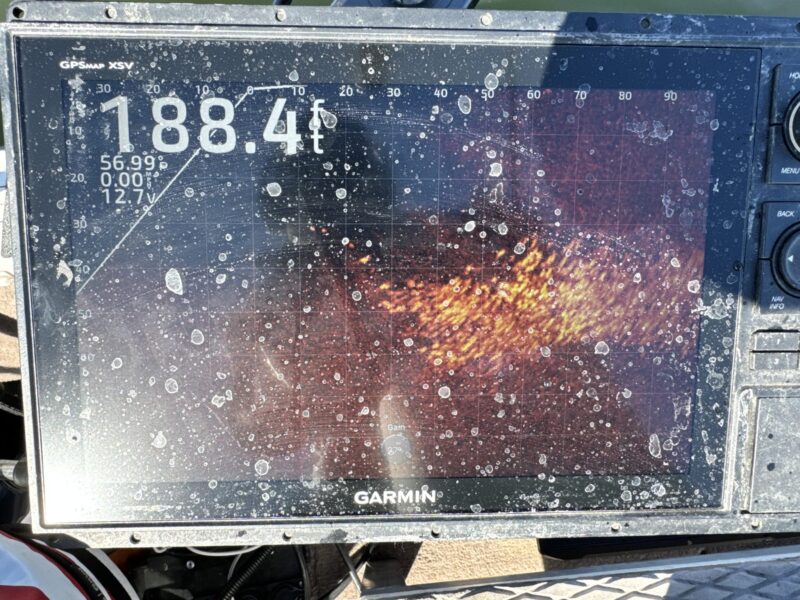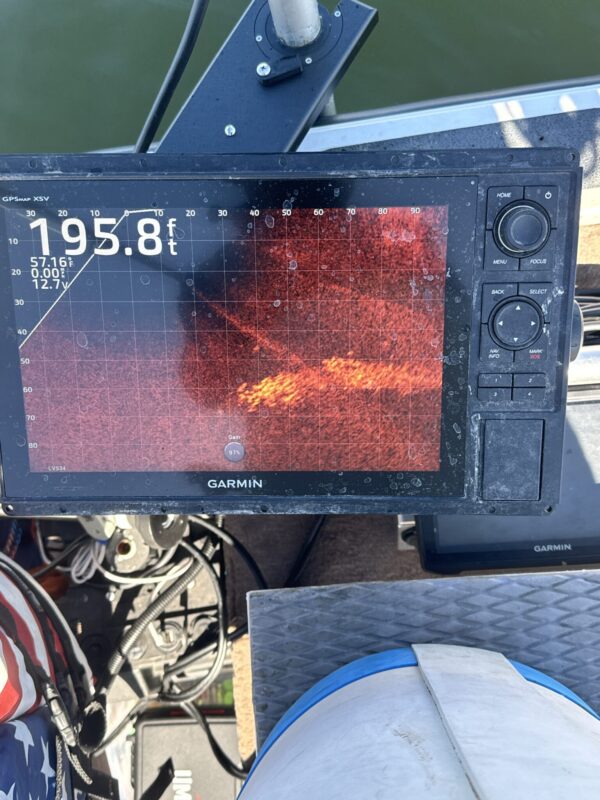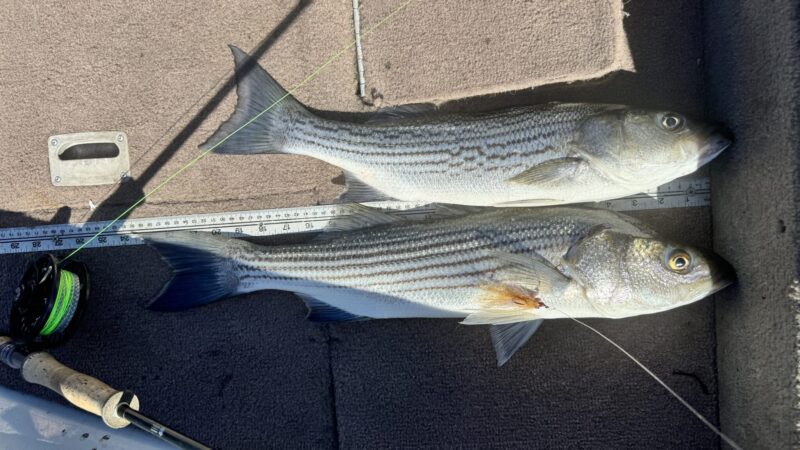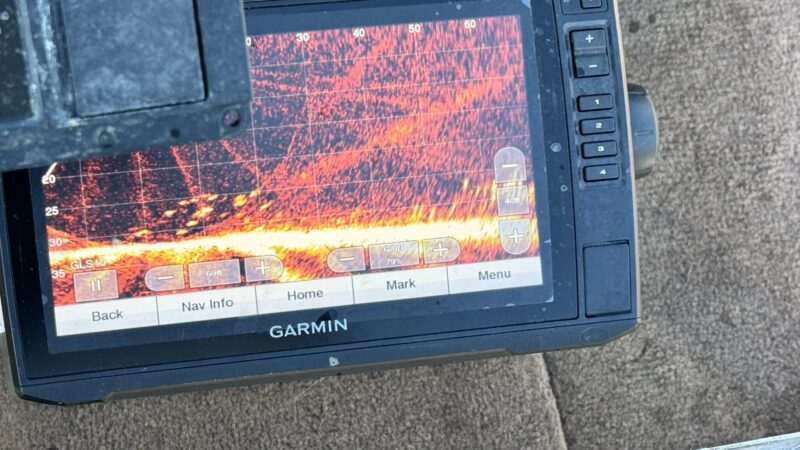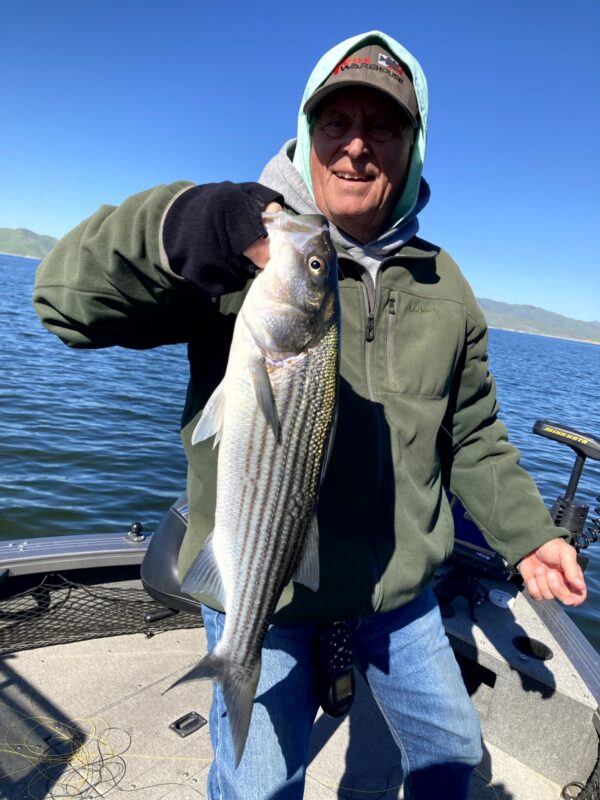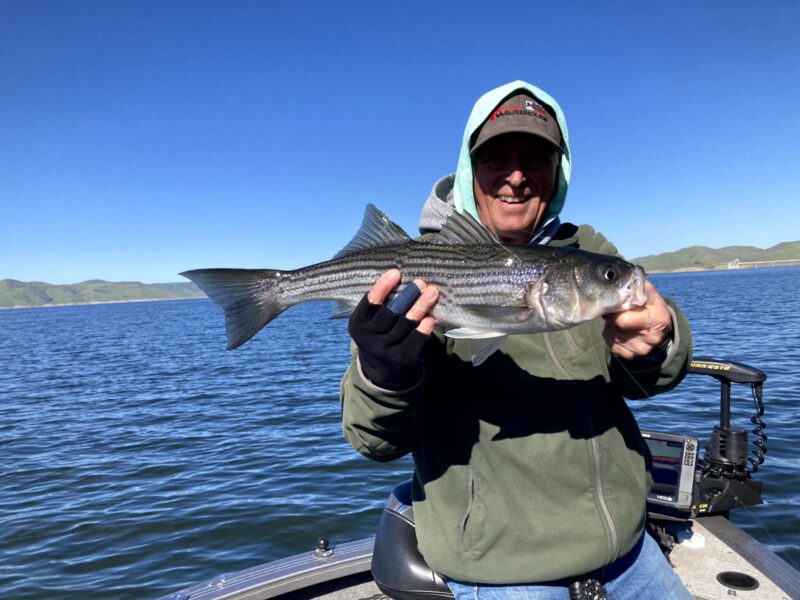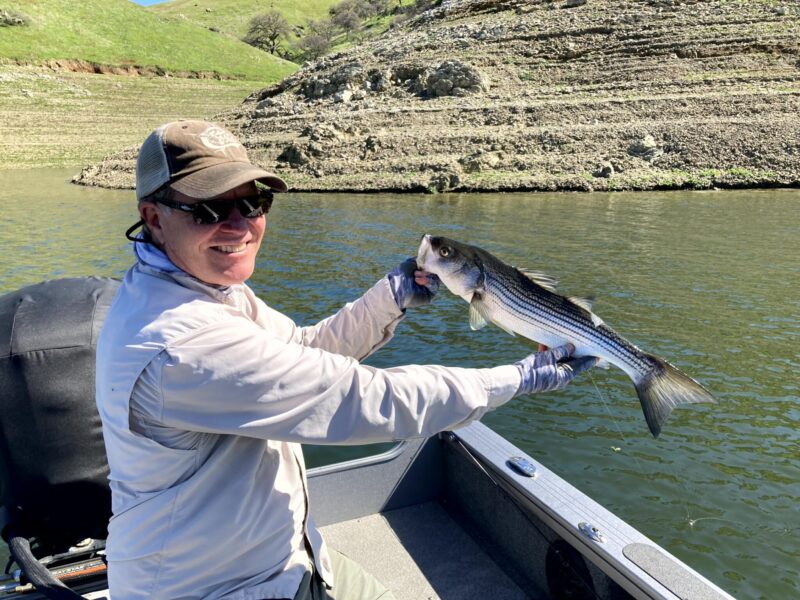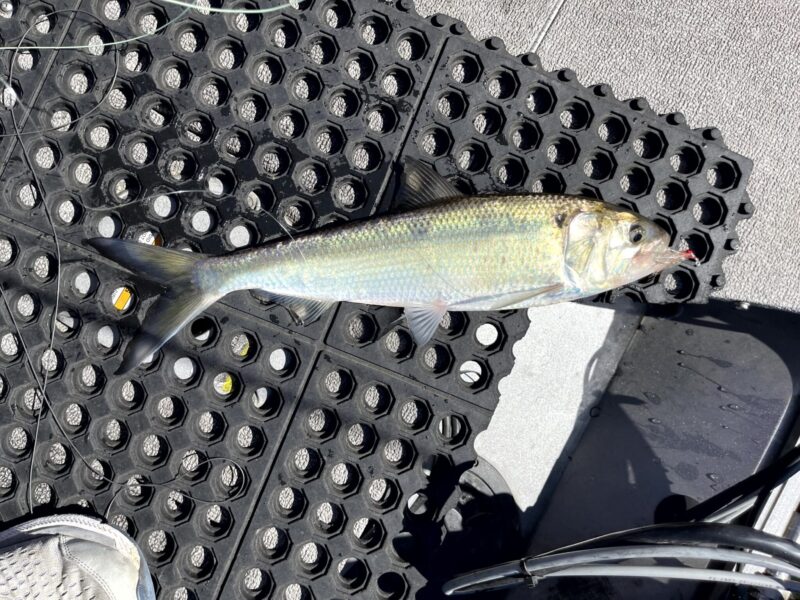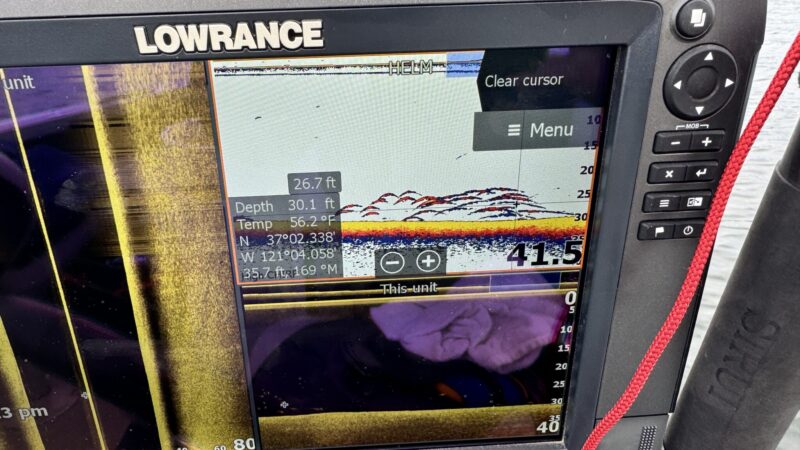
Wednesday Feb 28, 2024 –
The launch area at Dinosaur Point presented an unusual scene, bustling with 24 boats launched by 9:00, a sight quite unexpected for a Wednesday. However, as I reflect on the day after, it appears that we are in for another week of rain. The past three successful outings have coincided with unusually calm days just before a series of storms. Fueled by optimism, I set out to explore despite mixed reports for the week and the later moon cycles.
February typically poses challenges for fishing due to the lack of bait activity, causing fish to hunker down on the bottom and around humps. The hope is to encounter a few hungry ones among the hundreds present who might take a fly or lure. A good day in February can be only a couple fish .
The Bay of Pigs has remained a consistent spot for fish, although there are days when the catch is elusive. Over my recent four outings, I’ve observed that despite hours of presenting flies to schools of bottom hugging fish, the action tends to pick up suddenly, yielding several catches within a short span. However, the fish in the Bay of Pigs, although lengthy, appear thin and depleted indicating they are not actively feeding. Interestingly, their aggression seems to peak during the solunar peaks.
Embarking towards the Bay of Pigs, a familiar route for me, I encountered fellow fly anglers Vaughn, Bobby V, Brian, Bob M, Tim, and Rod. Deploying two live scopes, one in perspective mode and the other in forward mode, a new experiment for me, proved beneficial. Forward mode proved particularly useful for detecting suspended fish on the bottom, while perspective mode lacked visibility of bottom-dwellers. Despite ample fish sightings on 2D sonar, catches were sparse after a couple of hours, with only Rod managing six, likely obtained during the morning solunar peak. on sparse brown white clousers. Plus rod catches fish when nobody else can. He one of the old masters.
With the trolling and bait fishing crowd’s attention focused around the trash racks, I opted to explore the area later in the day to avoid the congestion. However, the racks were barren. My luck changed when I observed another boat vertical jigging spoons near the upwelling caused by the pumps. Remembering a past successful outing with Dan Blanton last year at a similar location when we caught over 100 fish in the swirling currents, I decided to venture out and was rewarded with a flurry of activity. Schools of stripers and shad congregated in the up currents, prompting an hour of catching fish at will. The live scopes showed huge schools of fish all around the upwelling numbering in the thousands. Mostly shad, the stripers were feeding above and below the dense schools of shad. Then the big schools in the upwelling are below 30 feet, I found using forward mode on the livescope much more beneficial in locating and staying on the schools. The count to these deep schools at 35 feet is 53 seconds. I like using longer leaders and weighted flies to get to depth faster. It can be frustrating weighting 53 seconds between retrieves so I often cast two rods so that I can let one sink while Im retrieving the other. It’s a dance between positioning the boat with livescope , and casting from two stripping buckets on the platform.
As the day progressed, the feeding frenzy tapered off, and I headed back, reflecting on the day’s events. Vaughn’s decision to return to the Bay of Pigs paid off, reaffirming my belief that the fish in February adhere to a feeding schedule, even if they remain present throughout the day. Vaughn and Bobby V. got 5 more after 3:00 in the Bay of Pigs for a total of 11. They were ” in the right place at the right time…”
My encounter with three large shad on a 3 inch clouser which surpassed my previous shad season’s tally. Bob M. also caught a Shad on a striper fly in the Bay of Pigs. Excited by the prospect, I plan to equip myself with a leader sporting two shad flies for the next outing. Vaughn’s sighting of surface-shad behavior in the Bay of Pigs, typically observed in May, heightened my anticipation for the next excursion, despite the forecast indicating a week-long wait for favorable conditions.

